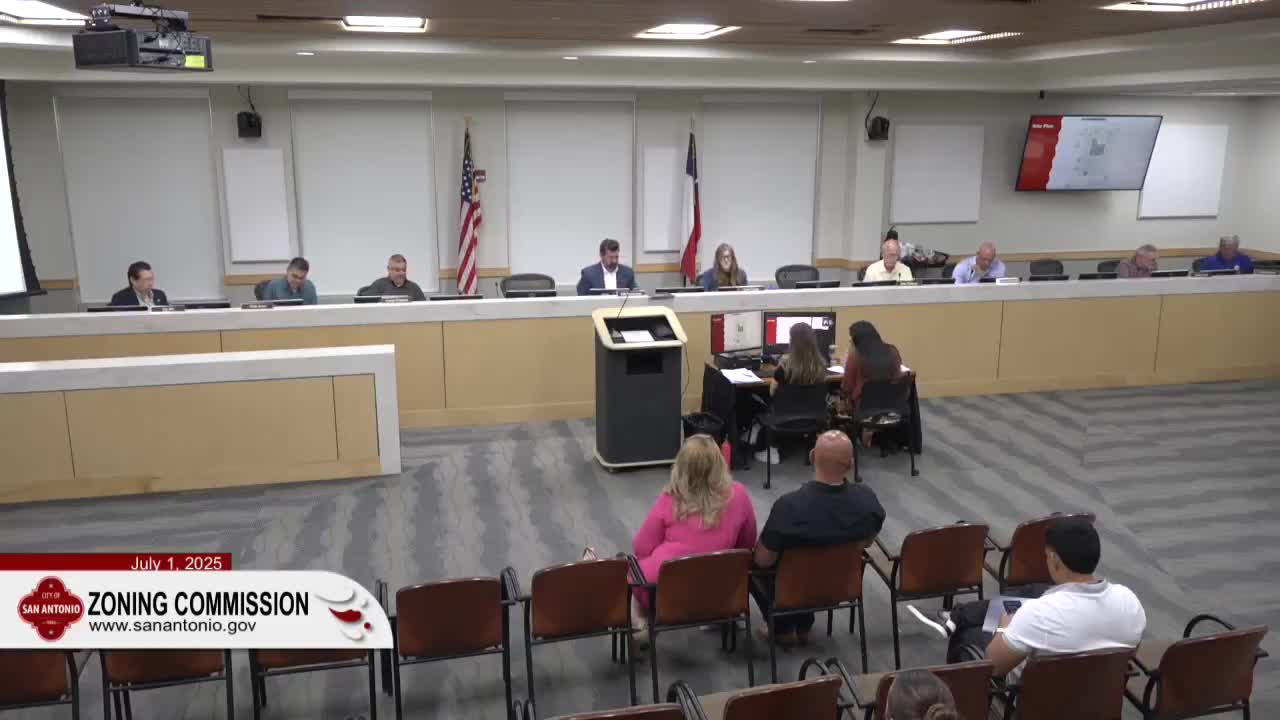Commissioners approve expansion for Northern Hills facility amid community acceptance
July 01, 2025 | San Antonio, Bexar County, Texas
This article was created by AI summarizing key points discussed. AI makes mistakes, so for full details and context, please refer to the video of the full meeting. Please report any errors so we can fix them. Report an error »

In a pivotal San Antonio Zoning Commission meeting on July 1, 2025, the approval of a zoning change for a commercial district sparked significant discussion among commissioners. The commission unanimously voted to recommend the expansion of an existing facility in a densely populated area, highlighting its acceptance by the surrounding neighborhood.
Commissioner Whitsett championed the motion, stating, “I feel like this is an appropriate use,” as the facility had previously operated quietly among residential homes. The motion received a second from Commissioner Barros and was passed with a roll call vote, indicating strong support for the expansion.
However, the meeting also addressed a contentious zoning request for a property at 8802 Troy Drive, seeking to transition from a residential to a commercial district with a conditional use for oversized vehicle storage. The proposal faced opposition from the neighborhood association, with staff citing potential adverse impacts on the area, including increased traffic and noise pollution. The existing residential zoning was deemed more suitable for the property, which is located within a floodplain.
The applicant, Daniel Pitalua, argued for the change, stating he needed the zoning adjustment to utilize the lot for his landscaping business. Despite his claims of minimal neighboring properties, the commission raised concerns about the implications of allowing commercial encroachment in a residential area.
As the meeting progressed, commissioners explored alternatives to the proposed zoning change but found that the requested C2CD designation was the least intensive option available for oversized vehicle storage. The discussion underscored the complexities of balancing business needs with community concerns, particularly in flood-prone areas.
The commission's recommendations will now move to the city council, where further deliberation will take place, allowing the applicant another opportunity to present his case. The outcomes of these discussions could significantly impact the neighborhood's character and future development.
Commissioner Whitsett championed the motion, stating, “I feel like this is an appropriate use,” as the facility had previously operated quietly among residential homes. The motion received a second from Commissioner Barros and was passed with a roll call vote, indicating strong support for the expansion.
However, the meeting also addressed a contentious zoning request for a property at 8802 Troy Drive, seeking to transition from a residential to a commercial district with a conditional use for oversized vehicle storage. The proposal faced opposition from the neighborhood association, with staff citing potential adverse impacts on the area, including increased traffic and noise pollution. The existing residential zoning was deemed more suitable for the property, which is located within a floodplain.
The applicant, Daniel Pitalua, argued for the change, stating he needed the zoning adjustment to utilize the lot for his landscaping business. Despite his claims of minimal neighboring properties, the commission raised concerns about the implications of allowing commercial encroachment in a residential area.
As the meeting progressed, commissioners explored alternatives to the proposed zoning change but found that the requested C2CD designation was the least intensive option available for oversized vehicle storage. The discussion underscored the complexities of balancing business needs with community concerns, particularly in flood-prone areas.
The commission's recommendations will now move to the city council, where further deliberation will take place, allowing the applicant another opportunity to present his case. The outcomes of these discussions could significantly impact the neighborhood's character and future development.
View full meeting
This article is based on a recent meeting—watch the full video and explore the complete transcript for deeper insights into the discussion.
View full meeting
